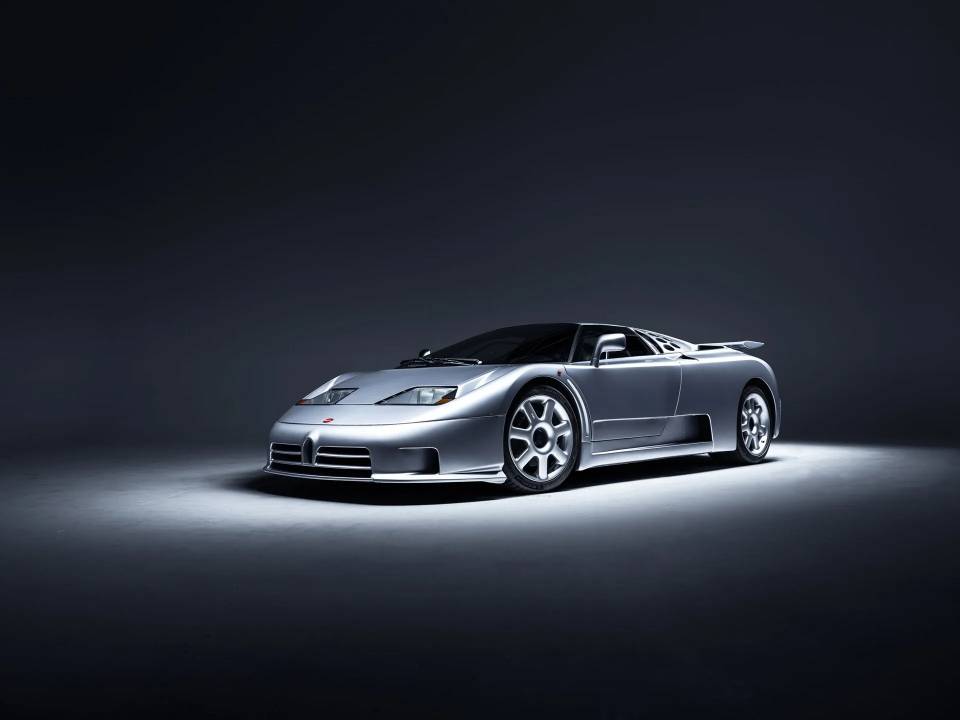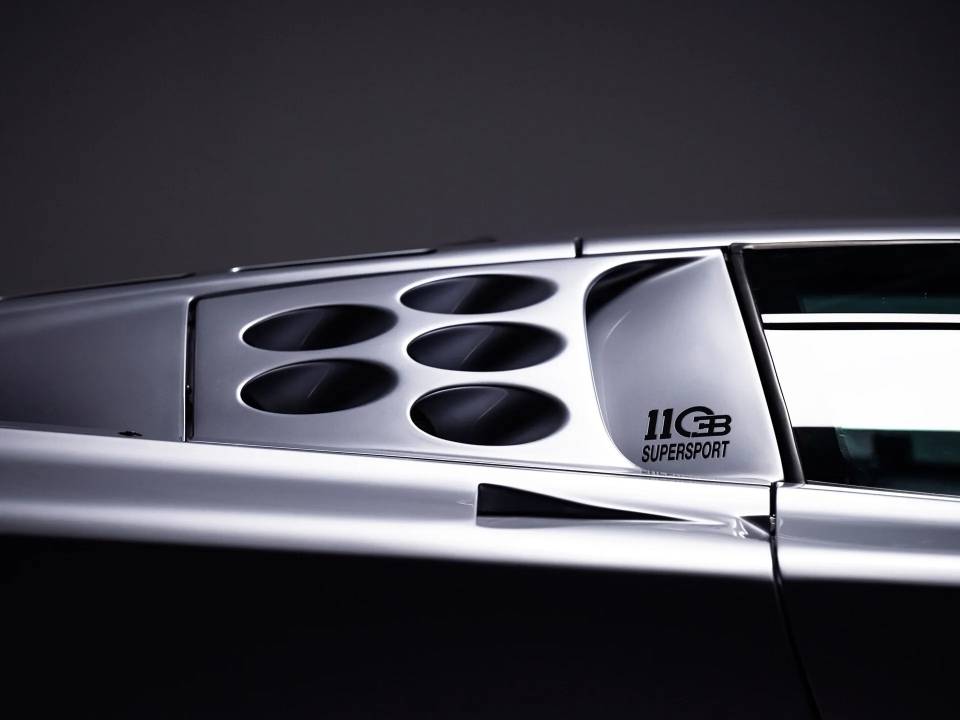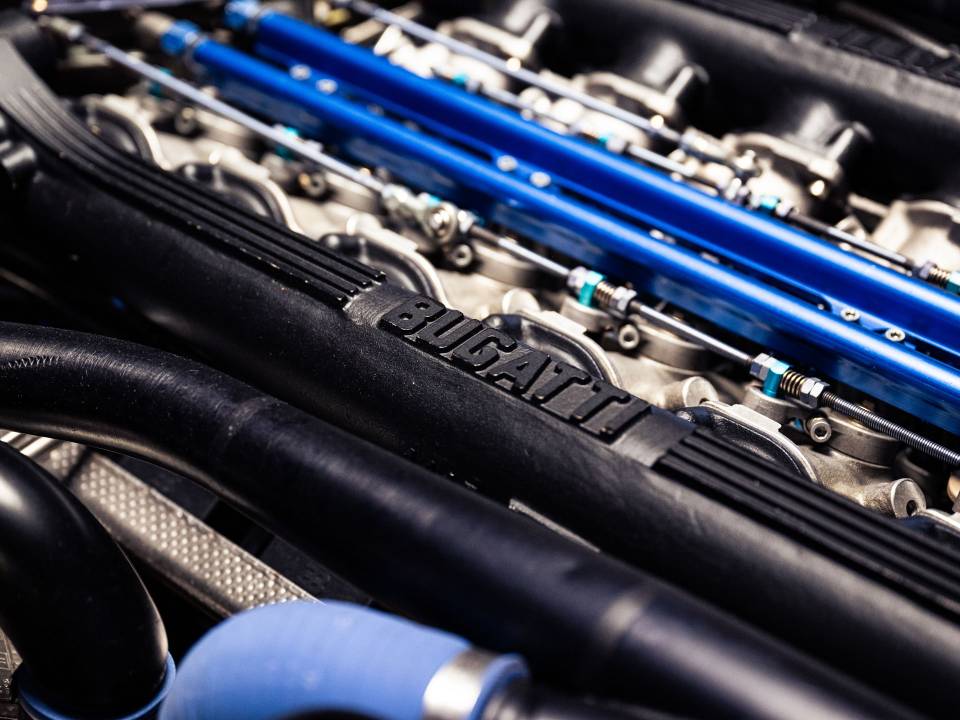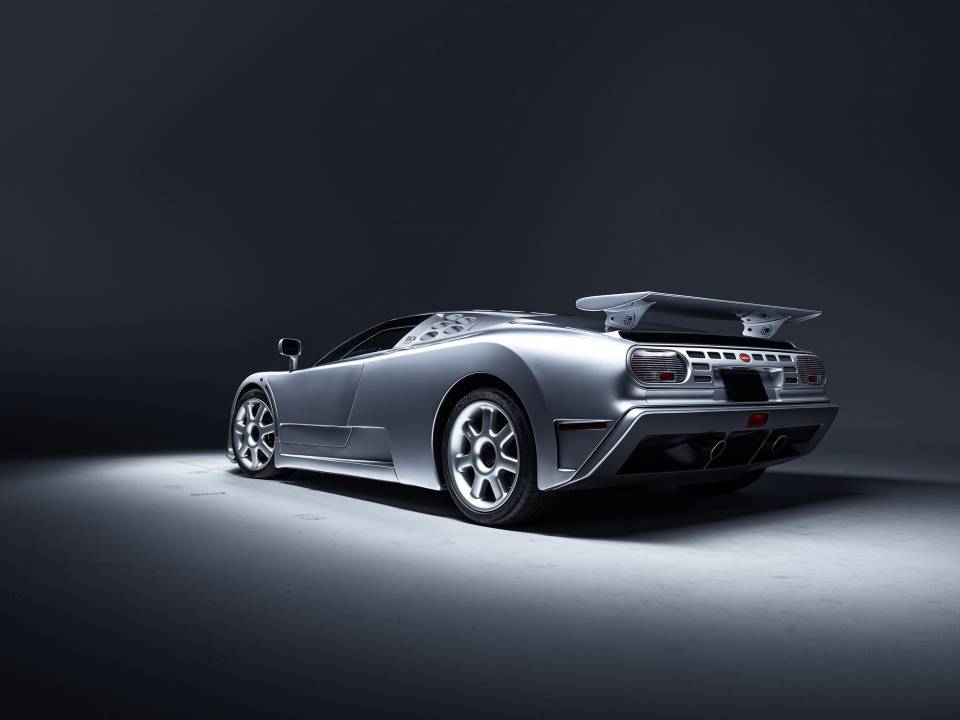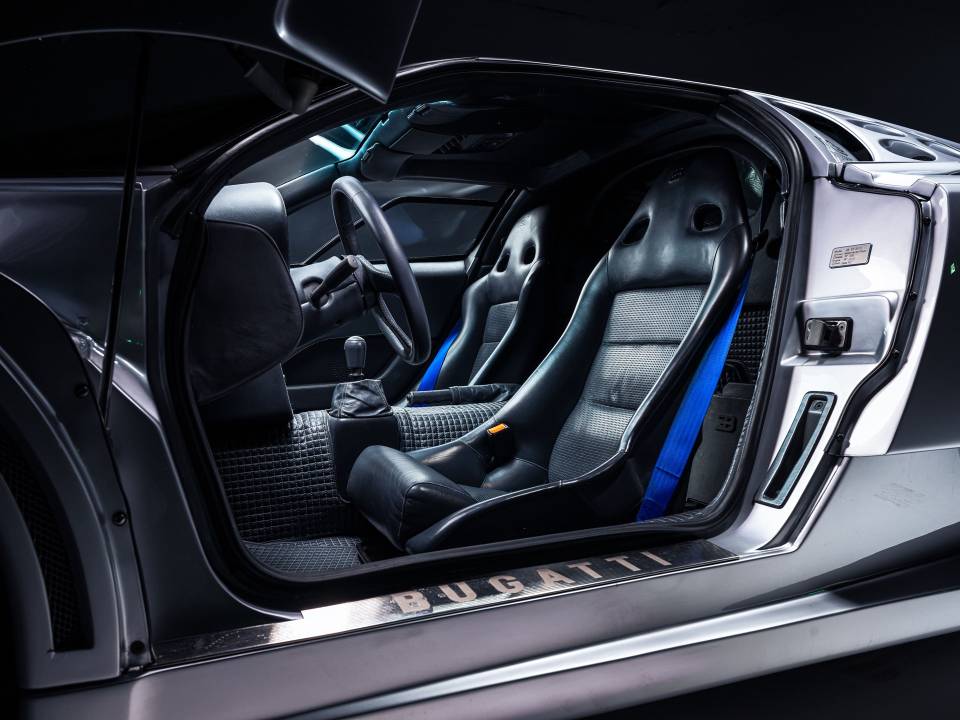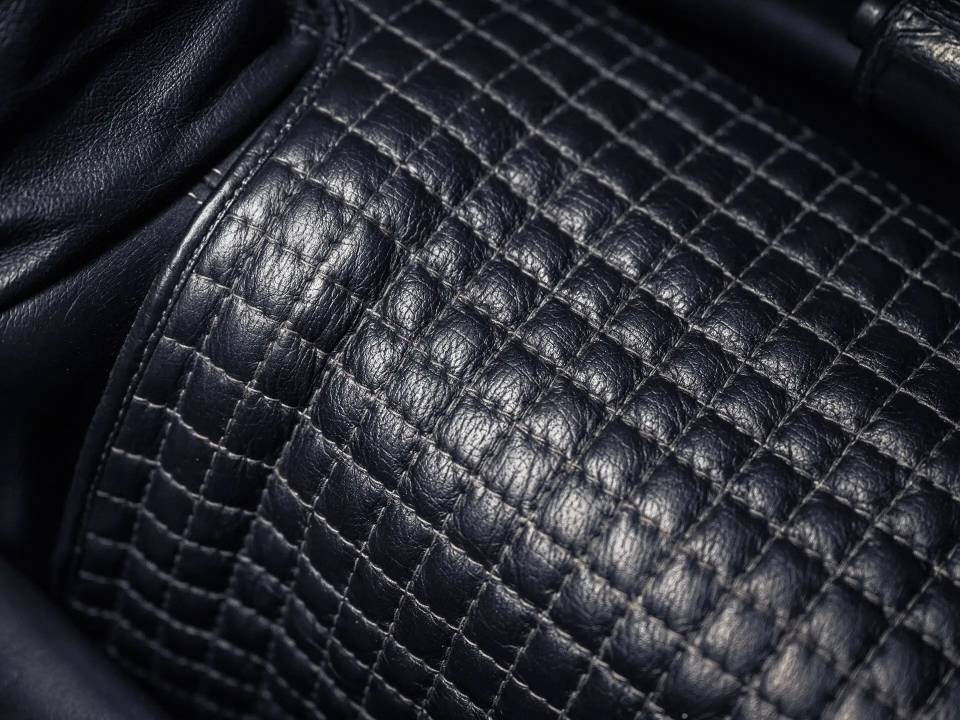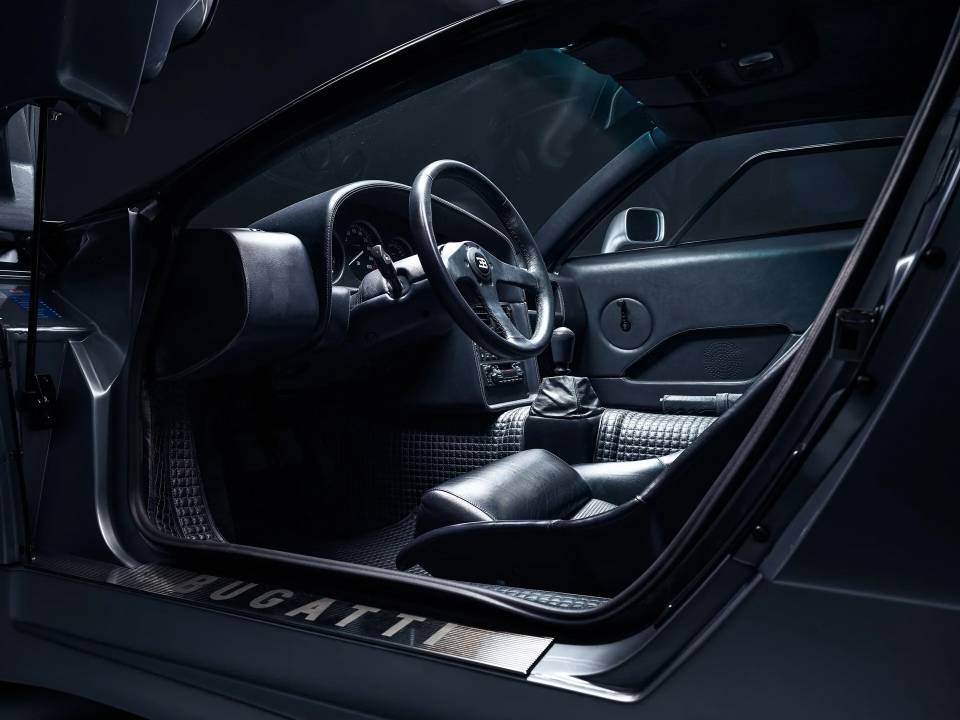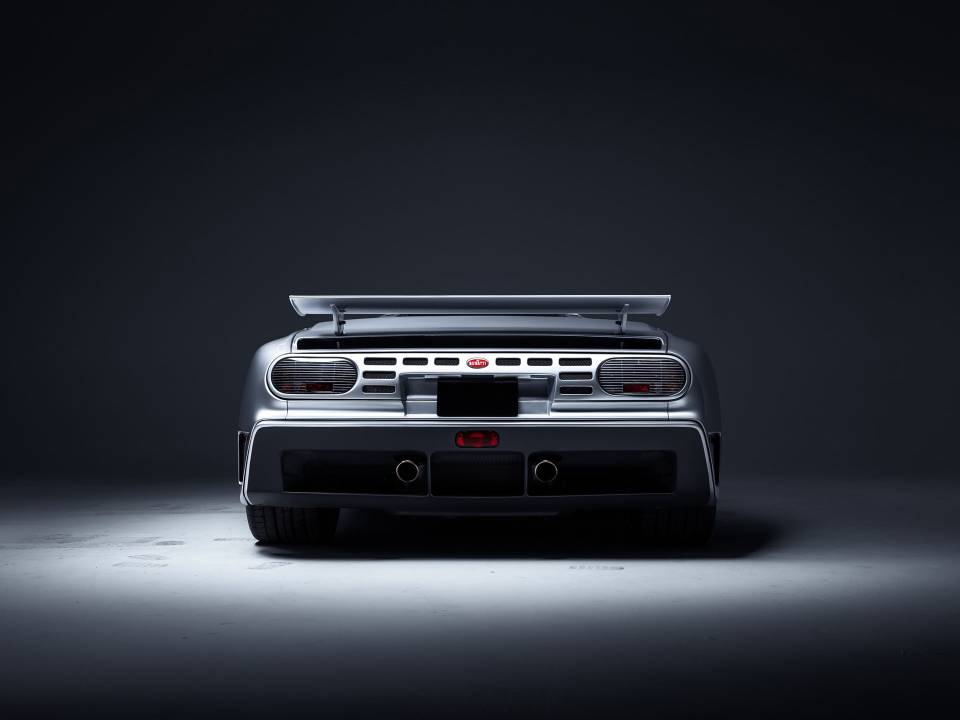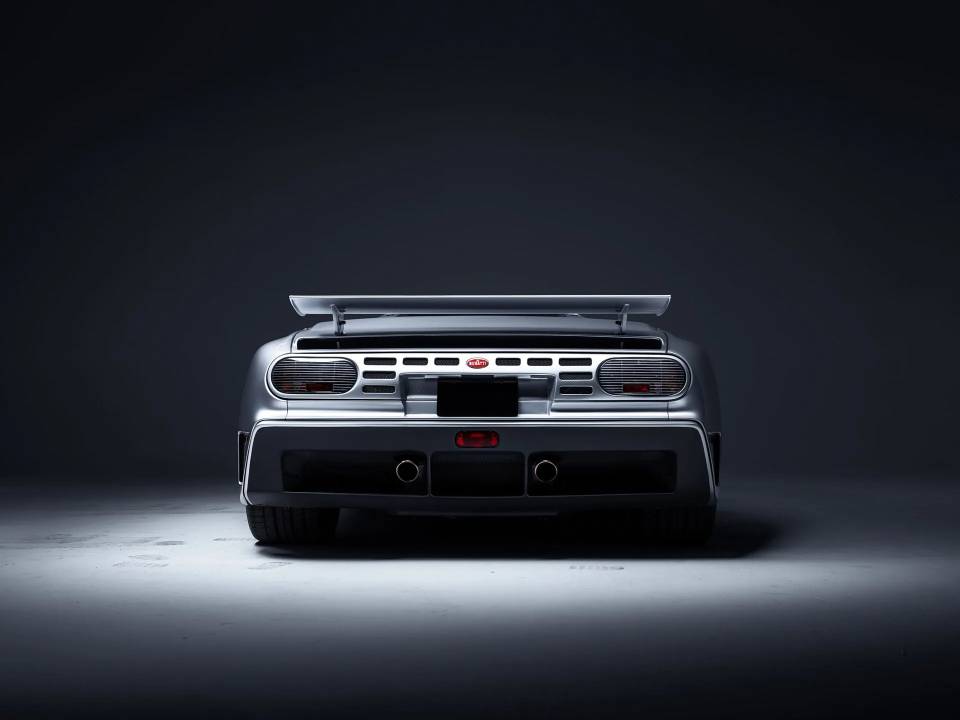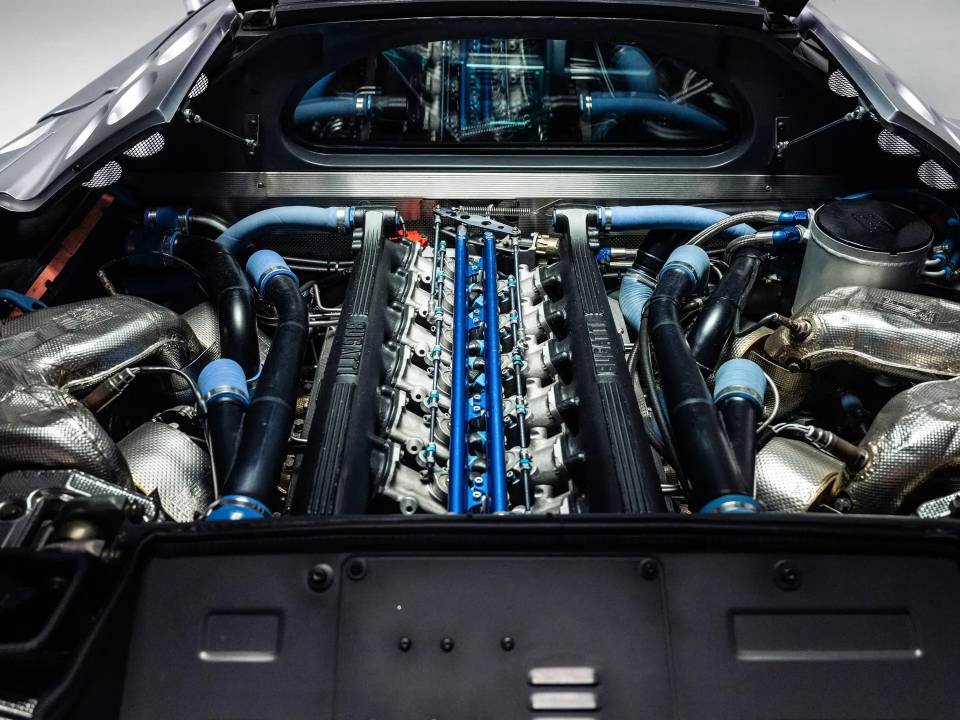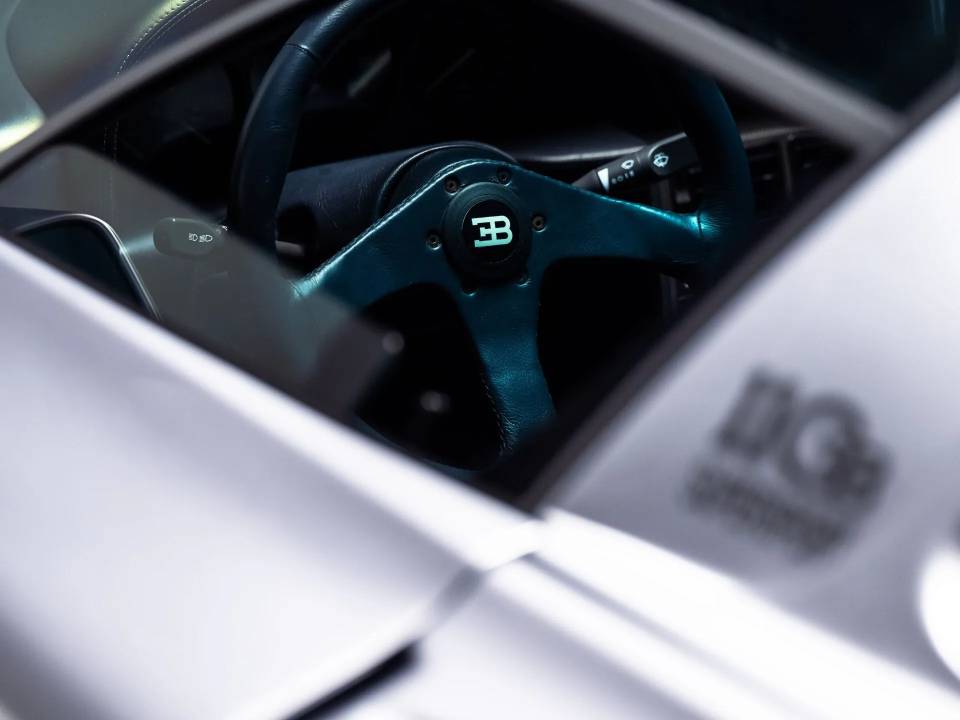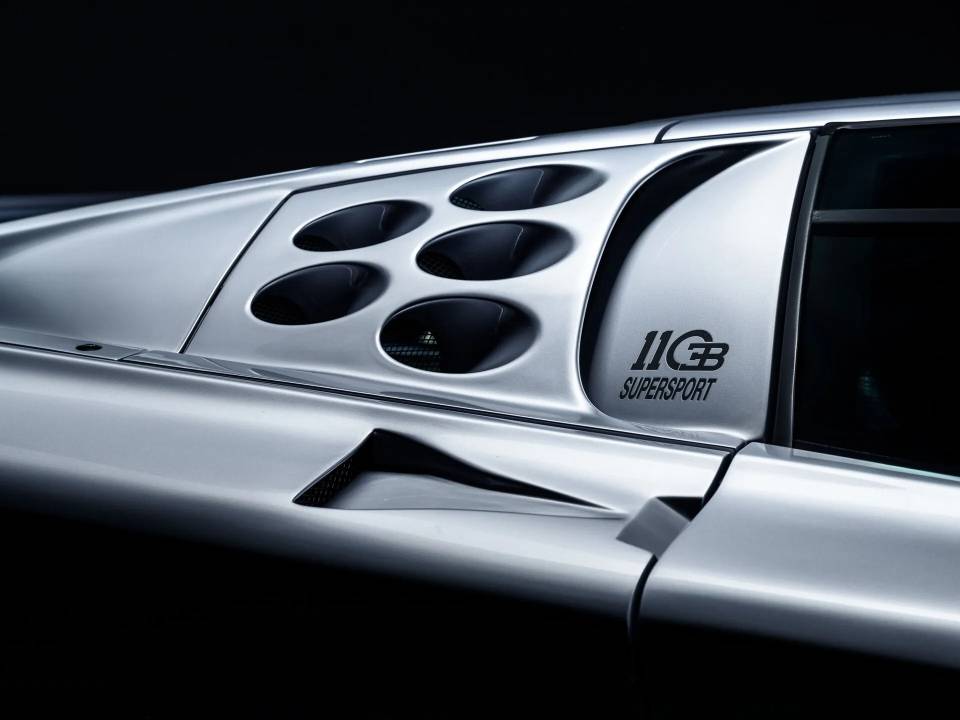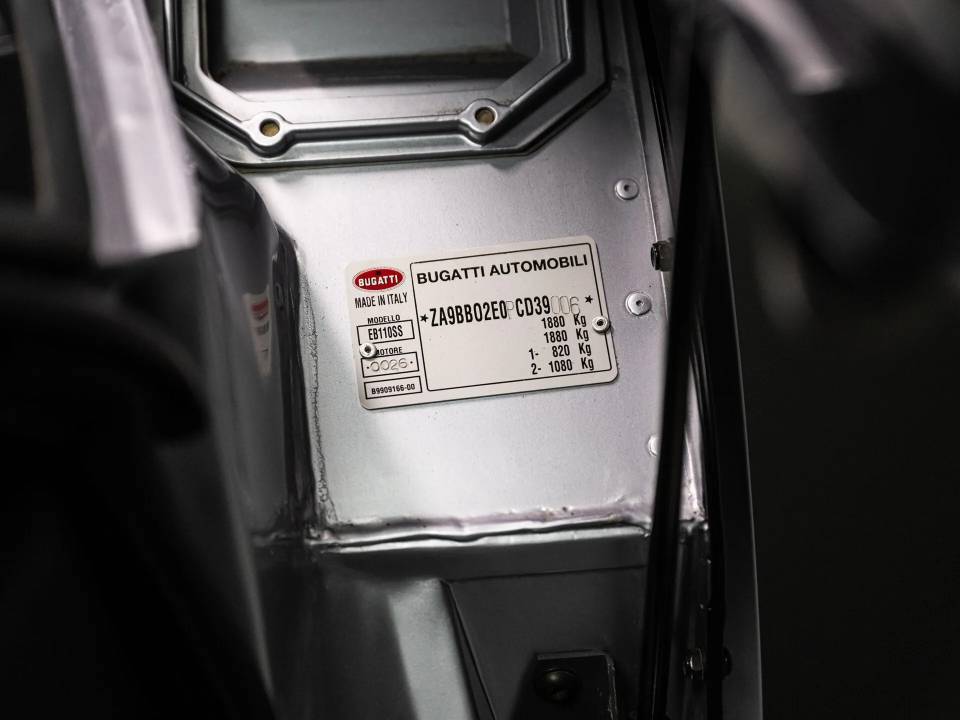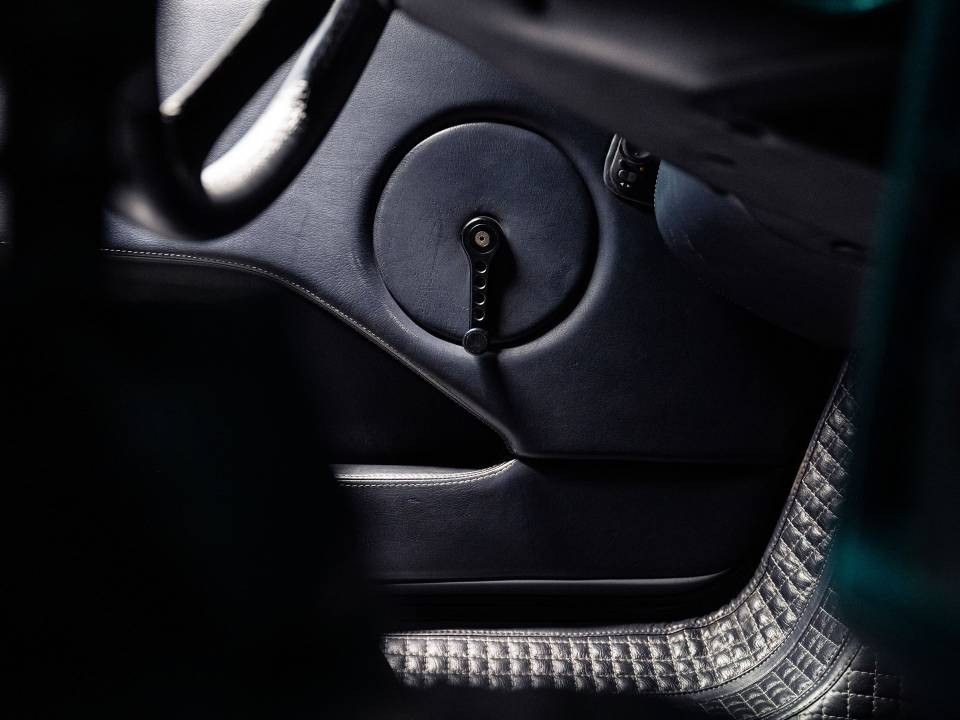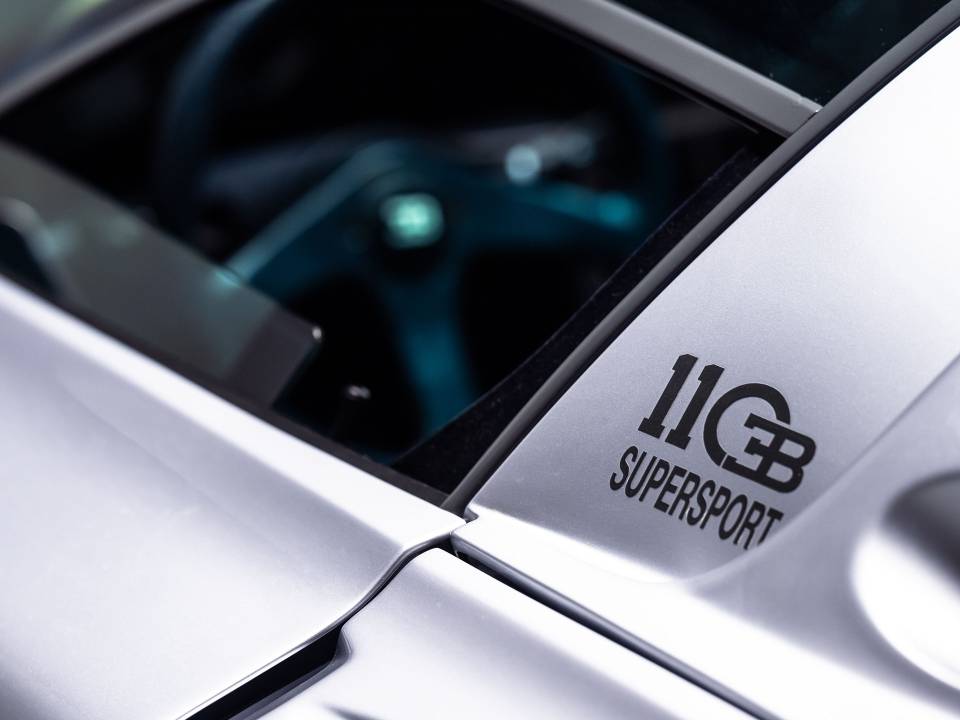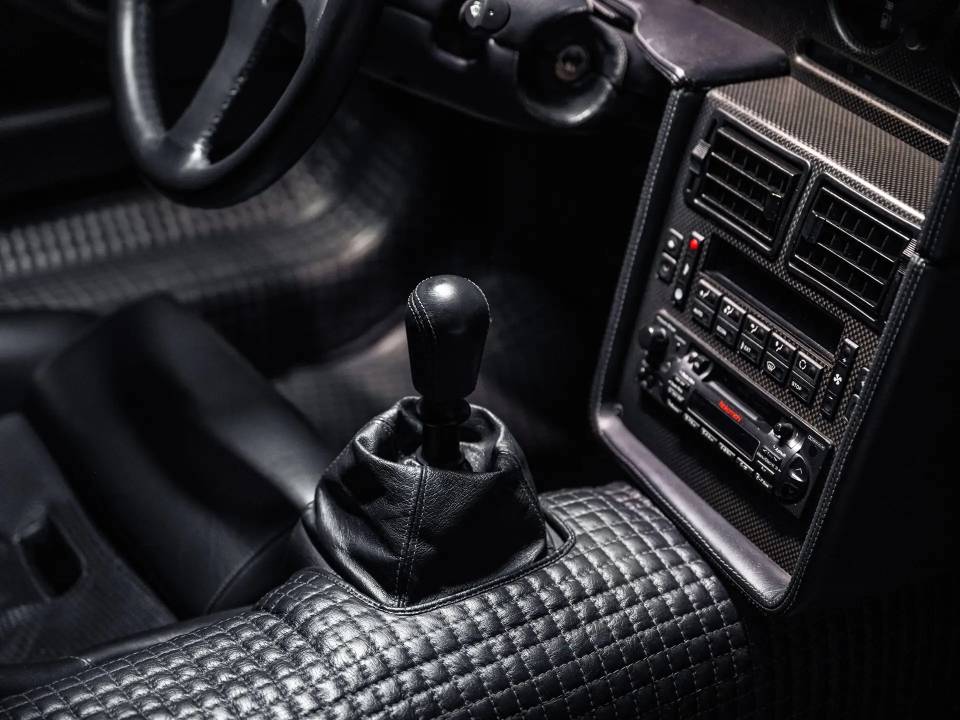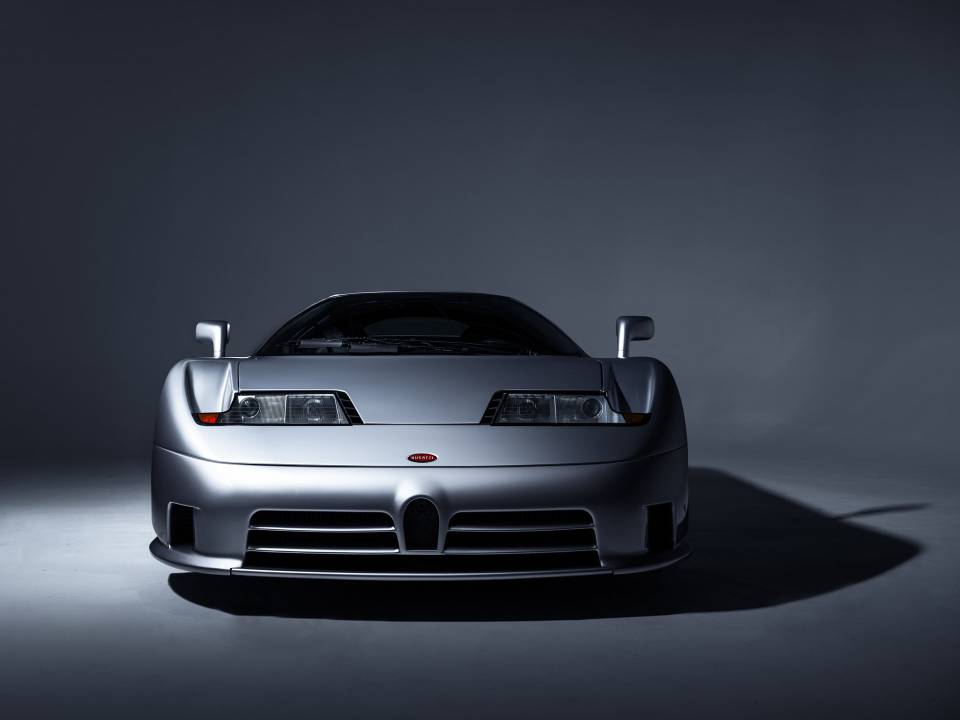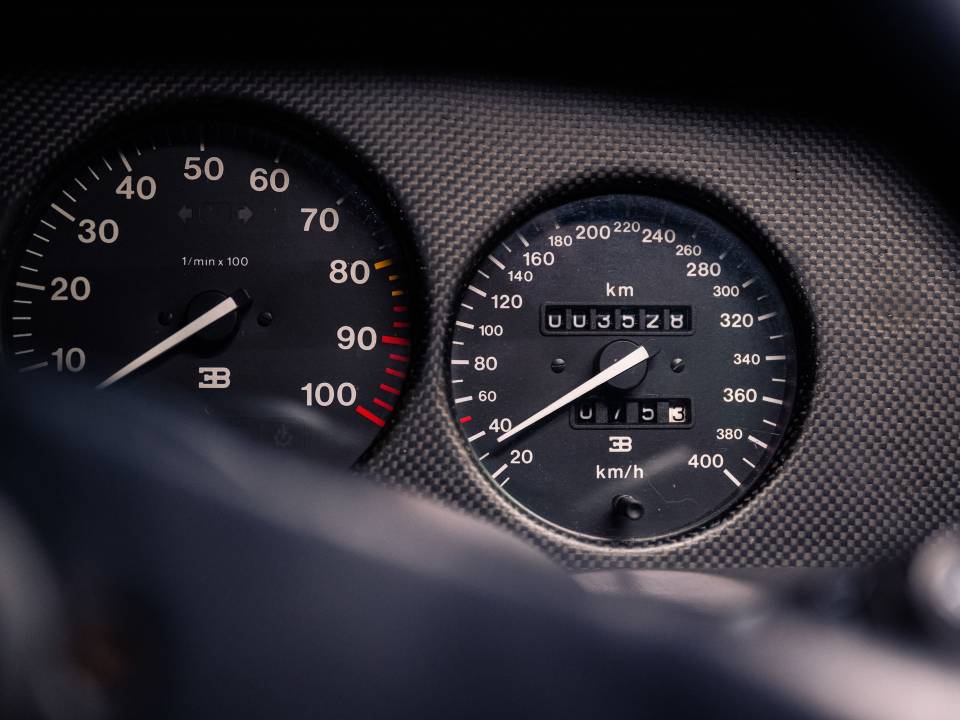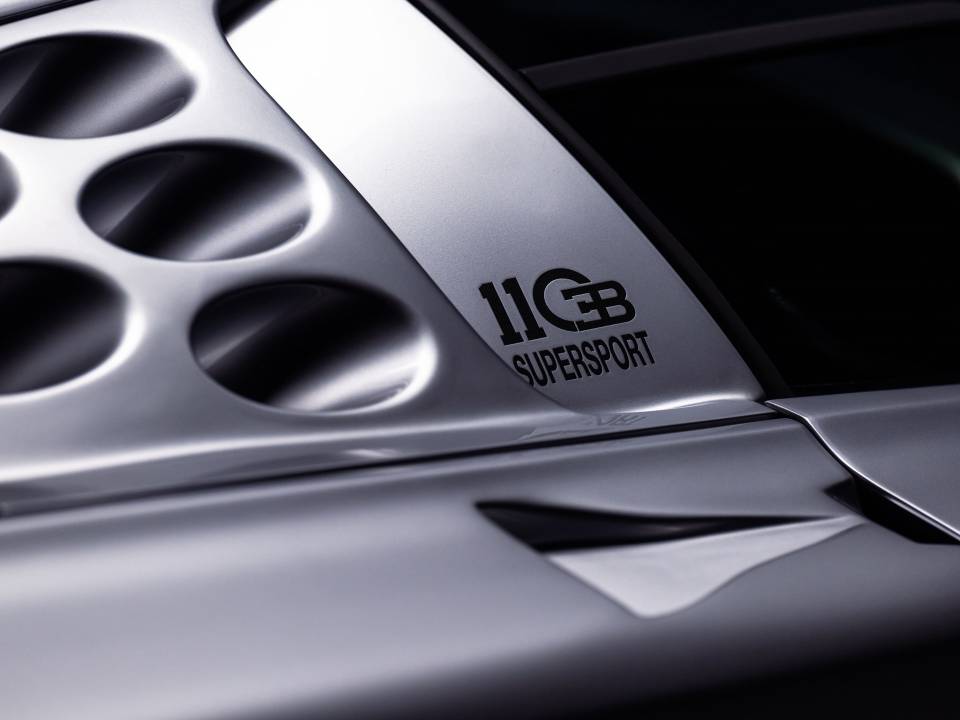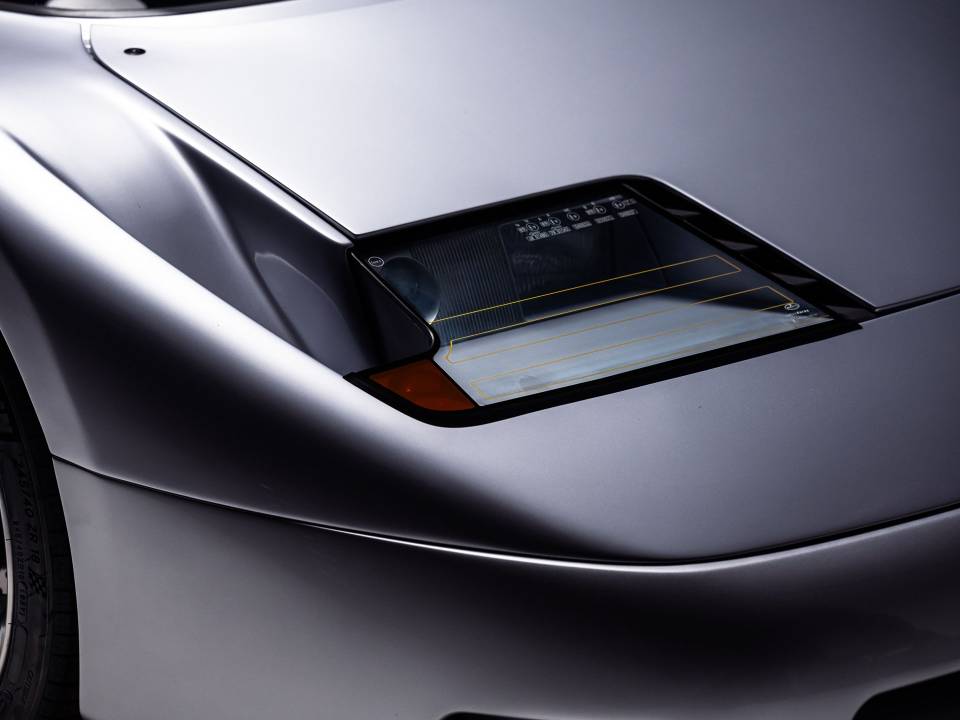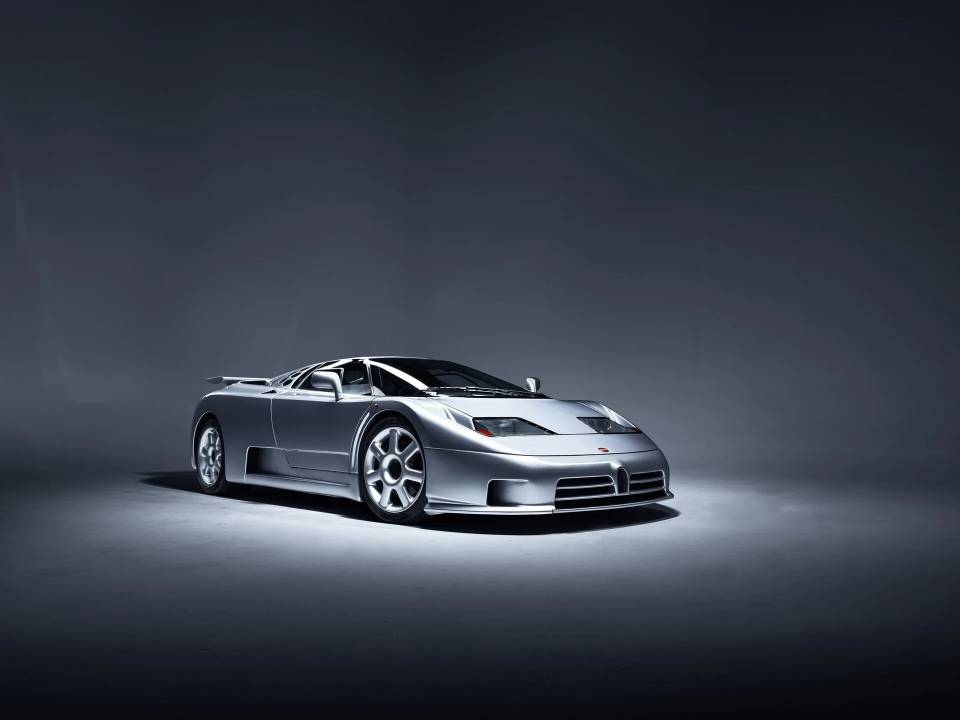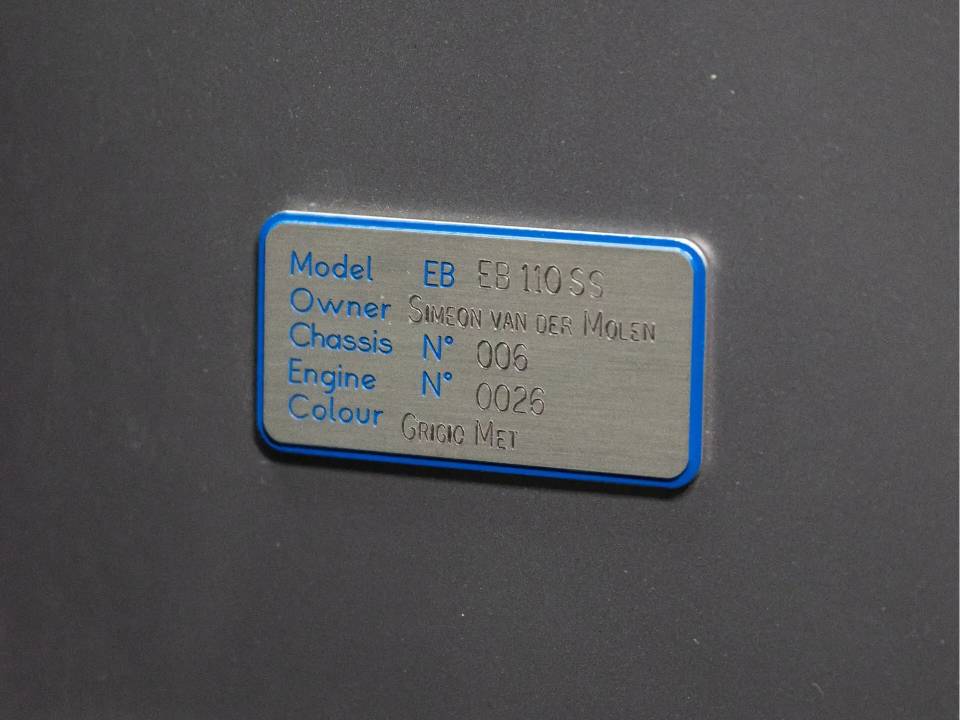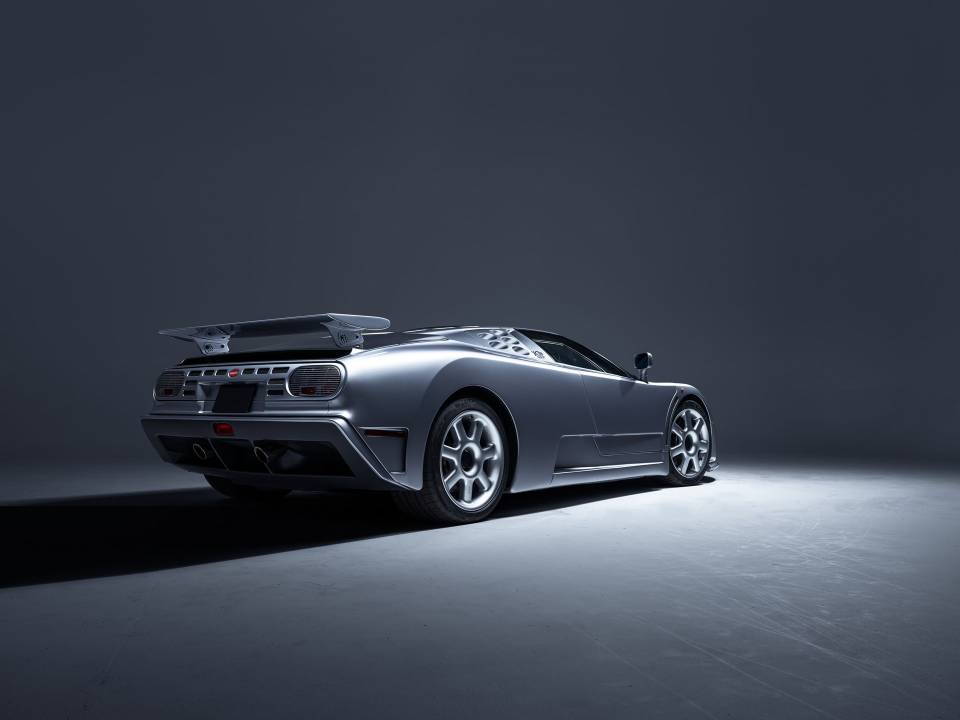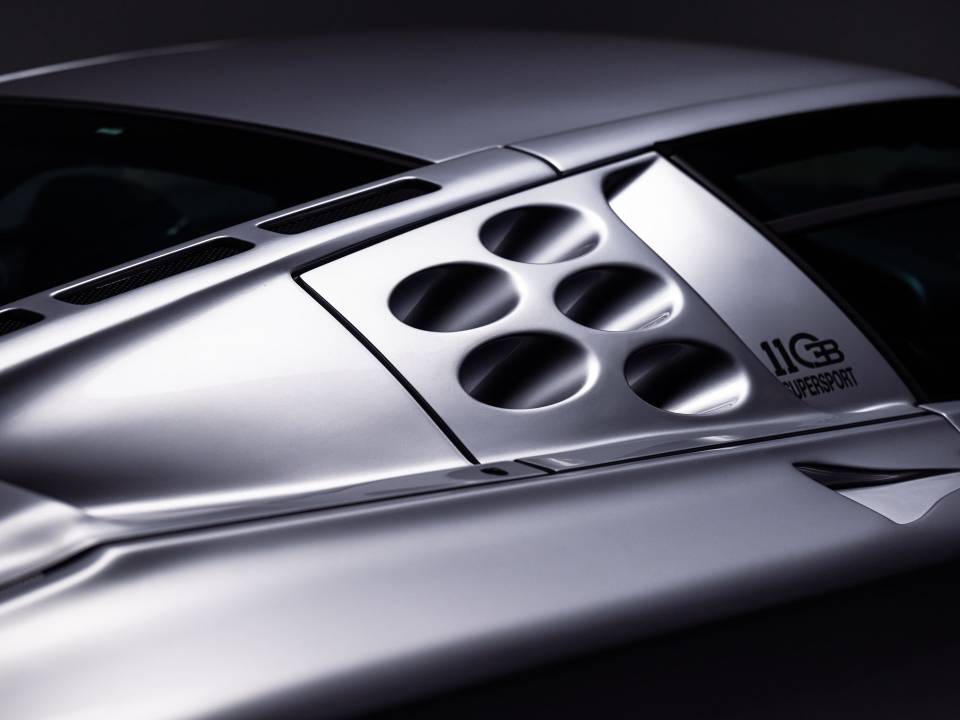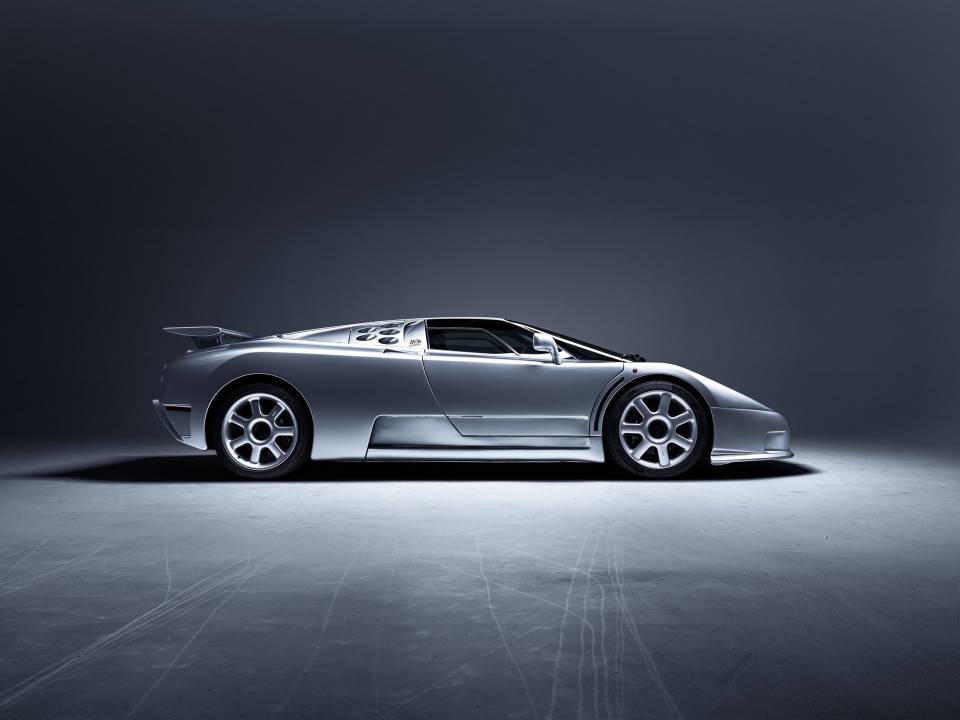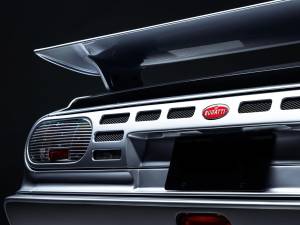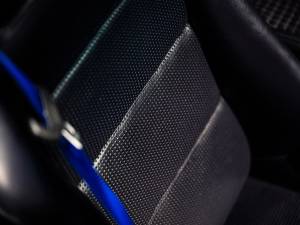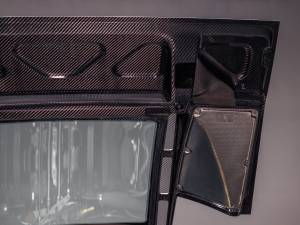1993 | Bugatti EB 110 SS
1993 Bugatti EB110 Super Sport Prototype
1993 Bugatti EB110 Super Sport Prototype
1993 Bugatti EB110 Super Sport Prototype
Description
- Ultra-rare and hugely significant EB110 Super Sport Prototype with unique factory modifications made during its testing and development
- One of three prototypes manufactured for development of the EB110 Super Sport
- Factory equipped with the engine from Bugatti’s world speed record-setting EB110
- Sole EB110 prototype with dual fuel tanks with single fuel filler system, carbon-fiber engine lid cover, and revised gear selector
- Retained by Bugatti as a factory test car for further perfecting the EB110 design
- Displayed 3,528 kilometers (2,192 miles) at cataloguing time
- Grigio Metallic over Blu Scuro leather with factory blue seatbelts
- Documented by a Bugatti Certificate of Authenticity and original warranty and service booklet
To bring a long-dormant automotive brand back to life is no mean feat; the stakes are even higher when the marque in question is one as hallowed as Bugatti. In the late 1980s, however, Italian entrepreneur Romano Artioli rose to the challenge, and while his dream was relatively short-lived, the vehicles he did bring to fruition—the Bugatti EB110 GT and its even more potent evolution, the EB110 Super Sport—can truly be said to have done justice to the legendary nameplate.
After several years of relentless development, and anticipating production success, Artioli went so far as to commission a stylish modern factory for the reborn automaker; its scale spoke to the size of his ambition. Although Artioli’s iteration of Bugatti was located in the high-performance hotspot that is Modena, Italy, rather than Bugatti’s original (and current) home of Molsheim, France, one imagines that Ettore Bugatti himself would have appreciated the scale and grandeur of the impressive, architecturally imposing facility.
Yet the cars produced at that facility would be even more impressive. The first of a planned range of offerings was the EB110, so named in honor of Ettore Bugatti’s 110th birthday. It would be built on a carbon-fiber chassis manufactured by French aerospace concern Aérospatiale. Now common in modern supercars, this advanced composite material was selected because the originally planned aluminum honeycomb was found to be too flexible for use in the ultra-high-performance mid-engine machine. The chassis was wrapped in striking bodywork that, in production form, combined elements of a concept design by Marcello Gandini with refinements by Giampaolo Benedini.
For power, the EB110 GT received a distinctive 3.5-liter quad-turbocharged V-12 paired with a six-speed manual transmission. A finely tuned all-wheel-drive system, yet another forward-looking piece of supercar technology, helped tame its 553 horsepower while ensuring that the EB110 would be as tractable as it was trackable.
Looking to further increase performance, Bugatti announced the EB110 Super Sport at the Geneva Salon in 1992, six months after the launch of the EB110 GT. Through a series of weight-saving and performance enhancements, Bugatti was able to reduce weight by more than 330 pounds while bumping output to a reported 603 horsepower. Its 0–60 sprint is said to have taken just 3.2 seconds, and its stated top speed was 221 mph. Even today, these are jaw-dropping figures.
As with any modern supercar, the EB110, and particularly the Super Sport variant, evolved through a careful series of prototypes, including the important example offered for sale here. This car, chassis PCD39006, is one of just three prototypes created for development of the EB110 Super Sport. Manufactured in early 1993, the car was initially built only as a carbon-fiber frame and roll cage without any mechanical parts, to be used by the United Test and Assembly Center in France for non-destructive homologation tests.
By June 1993, the chassis had been completed and equipped with a two-wheel-drive system. A specially modified engine (numbered 009) was fitted for fuel-homologation testing and to help develop a U.S.-legal EB110. The first group of EB110s had a significant issue with fuel delivery resulting from the car initially having two separate fuel tanks and fillers, one for each bank of the 3.5-liter V-12 engine. This caused the engine to run on only six cylinders if one tank ran dry before the other. Bugatti engineers used the prototype offered to develop a dual-tank system with a single filler to eliminate this problem.
After its fuel-system testing, PCD39006 was returned to the factory to be retrofitted with an all-wheel-drive system and a new engine. This new engine was to become its most exceptional feature. Numbered 026, it had been used by Bugatti in an earlier prototype to set the world speed record for a production car at 213 mph on 24 May 1992 at the Nardò Ring in Italy. The car used for the world-record speed run, chassis number GT006, was dismantled by Bugatti in its pursuit of perfecting the EB110’s shape.
After receiving its all-wheel-drive system and record-setting engine, PCD39006 was then retained by Bugatti as a factory prototype for use in addressing any ongoing issues with the model. In response to clients’ questions or complaints, Bugatti would look to this car to create suitable solutions which could then be implemented on later models. For this reason, it retains various factory modifications not found on other EB110s, including its twin-tank system with single fuel filler, a carbon-fiber engine lid cover, and a revised gear selector.
The car would remain with Bugatti as the company hit financial woes in 1995, eventually being sold through bankruptcy proceedings to its first owner in Holland on 12 December 1997. After his purchase, the first owner entrusted German automotive performance company Dauer Racing to bring the car up to legal road standards. After the dissolution of Bugatti, Dauer Racing, considered a foremost authority on the EB110, purchased most of Bugatti’s unused parts and chassis.
Now presented in stunning concours condition, this exceptionally rare example showed just 3,528 kilometers (2,192 miles) at cataloguing time and is certainly among the finest and most unique EB110s in existence. Finished in factory-correct Grigio Metallic over Blu Scuro trim with bright blue seat belts, the car is documented by its original warranty and service booklet as well as a Bugatti Certificate of Authenticity. Given its exceptionally low mileage, use as a factory testbed, and world-record-setting engine, this EB110 Super Sport Prototype is a truly remarkable automobile in every sense.
Détails du véhicule
Données du véhicule
- Marque
- Bugatti
- Série de modèles
- EB 110
- Modèle
- EB 110 SS
- Date immatriculation
- 01/1993
- Année
- 1993
- Kilométrage (compteur)
- 2 192 mls
- Numéro d'identification du véhicule
- Non fourni
- Numéro de moteur
- Non fourni
- Numéro de Transmission
- Non fourni
- Numéros correspondants
- Non
- Nombre de propriétaires précédents
- Non fourni
Détails techniques
- Type de carrosserie
- Coupé
- Puissance (kW/CV)
- 441/600
- Cylindrée (cm³)
- 3500
- Cylindres
- 12
- Portes
- 2
- Volant
- Gauche
- Boîte de vitesse
- Boîte manuelle
- Vitesses
- 6
- Traction
- 4 roues motrices
- Frein avant
- À disque
- Frein arrière
- À disque
- Carburant
- Essence
Configuration individuelle
- Couleur extérieure
- Argent
- Direction assistée
- Oui
- Verrouillage centralisé
- Oui
- Couleur intérieure
- Noir
- Matériel intérieur
- Cuir
- ABS
- Oui
État, immatriculation, documentation
- Expertise disponible
- Non fourni
- Immatriculé
- Prêt à conduire
Fournisseur

RM Sotheby´s
Jack Little
Heron House, 5 Heron Square
TW9 1EL Richmond
🇬🇧 Royaume-Uni
